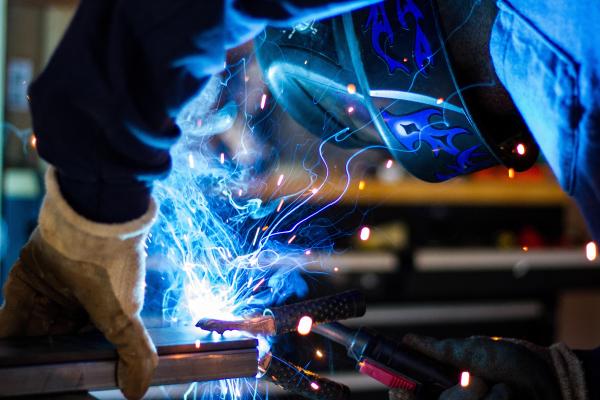Mastering Welding Applications: A Comprehensive Guide for Beginners
Welding is a valuable skill that opens up a world of possibilities in various industries, from construction to automotive to aerospace. If you're new to welding, navigating the plethora of techniques, equipment, and safety protocols can feel overwhelming. However, with the right guidance and practice, you can master welding applications and unleash your creativity in fabricating structures, repairing machinery, and more.
How to Use Application
Using welding applications effectively requires a combination of technical proficiency and creativity. Begin by selecting the appropriate welding process and equipment based on the specific requirements of your project. Ensure that you have a thorough understanding of the materials you'll be working with and adjust your welding parameters accordingly. For using the application, Nabtesco Precision can help you leverage its intuitive interface and robust features to streamline operations and enhance efficiency. Prioritize safety by wearing the necessary personal protective equipment and setting up a well-ventilated workspace.
Safety First
Before striking an arc, prioritize safety to prevent accidents and injuries. Welding produces intense heat, UV radiation, and sparks that can cause burns and eye damage. Always wear appropriate personal protective equipment (PPE), including a welding helmet with a shaded lens, flame-resistant clothing, gloves, and closed-toe shoes. Ensure your workspace is well-ventilated to dissipate fumes and gases produced during welding. Additionally, have a fire extinguisher nearby and familiarize yourself with emergency procedures.
- Always inspect your welding equipment before use to ensure it's in proper working condition. Check for any damaged cables, loose connections, or faulty components that could compromise safety. Regular maintenance and upkeep of your welding machine can prevent malfunctions and reduce the risk of accidents in the workshop.
- Keep your workspace clean and organized to minimize tripping hazards and ensure easy access to emergency equipment. Clear away clutter, debris, and flammable materials from the welding area to create a safe environment for yourself and others. Implement proper storage solutions for cylinders, electrodes, and welding accessories to prevent accidents caused by improper handling or storage.
- Be mindful of your surroundings and potential hazards such as flammable liquids, combustible materials, and electrical hazards. Avoid welding near gas tanks, open flames, or sources of ignition to prevent fires and explosions. Familiarize yourself with the location of emergency exits, first aid kits, and eyewash stations in case of emergencies.
- Prioritize proper ventilation to mitigate exposure to welding fumes and gases, which can pose health risks if inhaled in large quantities. Position exhaust fans or welding fume extractors to remove contaminants from the air and maintain air quality in the workspace. Consider using respiratory protection such as respirators or welding fume masks when working in confined or poorly ventilated areas to safeguard your respiratory health.
Equipment Essentials
To embark on your welding journey, you'll need essential equipment beyond your welding machine. Invest in a quality welding helmet with variable shade settings to protect your eyes from harmful radiation. Select welding gloves that offer dexterity and heat resistance without compromising safety. Other must-have tools include welding clamps, wire brushes, chipping hammers, and angle grinders for preparing and finishing welds.
Mastering Techniques
Achieving strong, aesthetically pleasing welds requires mastering various techniques. Start by practicing proper electrode or wire feeding and maintaining a consistent arc length. Experiment with different travel speeds and angles to control bead shape and penetration. Pay attention to joint preparation, ensuring surfaces are clean and free of contaminants to achieve optimal weld quality. Practice on scrap metal pieces to hone your skills before tackling actual projects.
- Focus on maintaining a steady hand and consistent travel speed to ensure uniform weld beads and proper fusion.
- Experiment with different welding positions, such as flat, horizontal, vertical, and overhead, to develop versatility and adaptability.
- Practice controlling heat input by adjusting parameters like voltage, amperage, and wire feed speed to prevent overheating or underfilling.
- Utilize welding aids and guides, such as magnetic welding squares and clamps, to ensure precise alignment and joint fit-up for seamless welds.
Material Matters
Different metals behave differently under the heat of welding, so understanding the properties of the materials you're working with is crucial. Factors such as thickness, composition, and conductivity influence welding parameters and technique selection. Take time to familiarize yourself with the characteristics of common welding materials like steel, aluminum, and stainless steel. Adjust your welding settings accordingly to achieve optimal results and prevent defects such as porosity and cracking.
Continuous Learning and Improvement
Welding is a skill that rewards dedication and practice. As you gain experience, continue to expand your knowledge through resources such as books, online tutorials, and welding courses. Experiment with new techniques and push your limits to refine your craftsmanship. Joining welding communities and forums can also provide valuable insights and support from experienced welders. Embrace the journey of continuous learning, and your welding skills will steadily evolve.
Mastering welding applications as a beginner requires patience, dedication, and a commitment to safety. By understanding different welding processes, prioritizing safety, acquiring the necessary equipment, mastering techniques, familiarizing yourself with materials, and embracing continuous learning, you can embark on a fulfilling journey in the world of welding.

